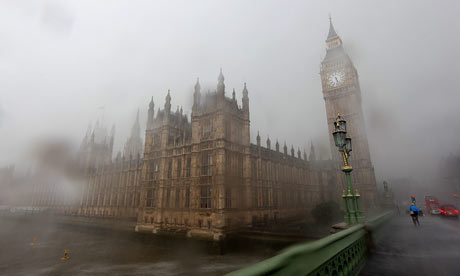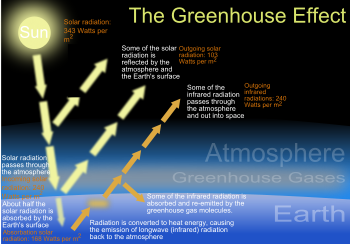Global Warming
Wednesday 11 April 2012
This a video of global warming created with windows movie maker
http://www.youtube.com/watch?v=TSK5ULmmDeo
This is a podcast on global warming
http://youtu.be/mrvBPqlngb8
This is a tutorial application on global warming
What is Global warming?
Global
warming is when the earth heats up (the temperaature rises).
It happens when greenhouse gases (carbon dioxide, water vapor, nitrous
oxide, and methane) trap heat and light from the sun in the earth’s
atmosphere, which increases the temperature.
This hurts many people, animals, and plants.
Many cannot take the change, so they die.
What causes Global warming?
Many
things cause global warming. One
thing that causes global warming is electrical pollution.
Electricity causes pollution in many ways, some worse than others.
In most cases, fossil fuels are burned to create electricity.
Fossil fuels are made of dead plants and animals.
Some examples of fossil fuels are oil and petroleum. Many pollutants (chemicals that pollute the air, water, and
land) are sent into the air when fossil fuels are burned. Some of these chemicals are called greenhouse gasses.
We
use these sources of energy much more than the sources that give off less
pollution. Petroleum, one of the
sources of energy, is used a lot. It
is used for transportation, making electricity, and making many other things.
Although this source of energy gives off a lot of pollution, it is used
for 38% of the Worlds’ energy.
1. Global Warming Cause: Carbon dioxide emissions from fossil fuel burning power plants
Source: Planetsave (http://s.tt/12tkS)
1. Global Warming Cause: Carbon dioxide emissions from fossil fuel burning power plants
1. Carbon dioxide emissions from fossil fuel burning power plant.
Source: Planetsave (http://s.tt/12tkS)
Our ever increasing addiction to electricity from coal burning power plants releases enormous amounts of carbon dioxide into the atmosphere. 40% of U.S. CO2 emissions come from electricity production, and burning coal accounts for 93% of emissions from the electric utility industry.
Every day, more electric gadgets flood the market, and without widespread alternative energy sources, we are highly dependent on burning coal for our personal and commercial electrical supply.
2. Carbon dioxide emissions from burning gasoline for transportation.
Our modern car culture and appetite for globally sourced goods is responsible for about 33% of emissions in the U.S. With our population growing at an alarming rate, the demand for more cars and consumer goods means that we are increasing the use of fossil fuels for transportation and manufacturing. Our consumption is outpacing our discoveries of ways to mitigate the effects, with no end in sight to our massive consumer culture.
3. Methane emissions from animals, agriculture such as rice paddies, and from Arctic seabeds
Methane is another extremely potent greenhouse gas, ranking right behind CO2. When organic matter is broken down by bacteria under oxygen-starved conditions (anaerobic decomposition) as in rice paddies, methane is produced. The process also takes place in the intestines of herbivorous animals, and with the increase in the amount of concentrated livestock production, the levels of methane released into the atmosphere is increasing. Another source of methane is methane clathrate, a compound containing large amounts of methane trapped in the crystal structure of ice. As methane escapes from the Arctic seabed, the rate of global warming will increase significantly.
Another source of methane is methane clathrate, a compound containing large amounts of methane trapped in the crystal structure of ice. As methane escapes from the Arctic seabed, the rate of global warming will increase significantly.
Source: Planetsave (http://s.tt/12tkS)
Another source of methane is methane clathrate, a compound containing large amounts of methane trapped in the crystal structure of ice. As methane escapes from the Arctic seabed, the rate of global warming will increase significantly.
Source: Planetsave (http://s.tt/12tkS
4. Deforestation, especially tropical forests for wood, pulp, and farmland
The use of forests for fuel (both wood and for charcoal) is one cause of deforestation, but in the first world, our appetite for wood and paper products, our consumption of livestock grazed on former forest land, and the use of tropical forest lands for commodities like palm oil plantations contributes to the mass deforestation of our world. Forests remove and store carbon dioxide from the atmosphere, and this deforestation releases large amounts of carbon, as well as reducing the
amount of carbon capture on the planet.
5. Increase in usage of chemical fertilizers on croplands
In the last half of the 20th century, the use of chemical fertilizers. (as opposed to the historical use of animal manure) has risen dramatically. The high rate of application of nitrogen-rich fertilizers has effects on the heat storage of cropland (nitrogen oxides have 300 times more heat-trapping capacity per unit of volume than carbon dioxide) and the run-off of excess fertilizers creates in our oceans. In addition to these effects, high nitrate levels in groundwater due to over-fertilization are cause for concern for human health.
3. Global Warming Cause: Methane emissions from animals, agriculture such as rice paddies, and from Arctic seabeds
Source: Planetsave (http://s.tt/12tkS)
3. Global Warming Cause: Methane emissions from animals, agriculture such as rice paddies, and from Arctic seabeds
Source: Planetsave (http://s.tt/12tkS)
The negative effects of global warming?
Effects of Melting Glacier
Glaciers are formed by snow. This snow keeps on freezing and thawing
(depending on the climate and temperature) and finally gets converted
into ice. This ice gets compacted and firmer when a new layer of snow
falls over it and compresses it under pressure. As more snow gets
converted into ice, the weight and size of the glacier keeps increasing.
Glacier ice is melting much faster today than was expected. This has got serious effects on the earth, mostly negative.
Temperatures across the globe have gone upward, helping the cause of ice
glaciers melting faster than required. In certain places across the
world small ice glaciers have vanished, exposing the earth below. Ice
glaciers are able to deflect almost 80% heat of the sun, absorbing
approximately 20% heat. This figure gets reversed when sunlight falls on
earth, 80% is absorbed and only 20% is deflected back. This in turn
helps in increasing global temperatures. This leads to an increase in
the temperature of sea water. Icebergs melt faster. Added to this is the
expansion of sea water, leading to a rise in sea water levels.
Effects of Changing Weather
For most places, global warming will result in more frequent hot days
and fewer cool days, with the greatest warming occurring over land.
Longer, more intense heat waves will become more common. Storms,
floods, and droughts will generally be more severe as precipitation
patterns change. Hurricanes may increase in intensity due to warmer
ocean surface temperatures
It is impossible to pin any single unusual weather event on global
warming, but emerging evidence suggests that global warming is already
influencing the weather. Heat waves, droughts, and intense rain events have increased in frequency during the last 50 years, and human-induced global warming more likely than not contributed to the trend.
Effects of Rising sea levels
Between 1870 and 2000, the sea level increased by 1.7 millimeters per year on average, for a total sea level rise of 221 millimeters (0.7 feet or 8.7 inches). And the rate of sea level rise is accelerating. Since 1993, NASA satellites have shown that sea levels are rising more quickly, about 3 millimeters per year, for a total sea level rise of 48 millimeters (0.16 feet or 1.89 inches) between 1993 and 2009.
Effects of Greenhouse gases
Life on earth depends on energy from the sun. About 30 percent of the
sunlight that beams toward Earth is deflected by the outer atmosphere
and scattered back into space. The rest reaches the planet's surface and
is reflected upward again as a type of slow-moving energy called
infrared radiation.
The heat caused by infrared radiation is absorbed by "greenhouse
gases" such as water vapor, carbon dioxide, ozone and methane, which
slows its escape from the atmosphere.
Although greenhouse gases make up only about 1 percent of the Earth's
atmosphere, they regulate our climate by trapping heat and holding it
in a kind of warm-air blanket that surrounds the planet.
This phenomenon is what scientists call the "greenhouse effect."
Without it, scientists estimate that the average temperature on Earth
would be colder by approximately 30 degrees Celsius (54 degrees
Fahrenheit), far too cold to sustain our current ecosystem.
Ways to Prevent Global Warming
/ Things You Can Do to Help
- Drive less. Take bikes, walk or carpool whenever possible. Transportation sector is second largest contributor of carbon dioxide emissions into the atmosphere.
- Consider investing in a hybrid or electric vehicle to help prevent against further global warming.
- Replace all the light bulbs in and around your home with energy-efficient fluorescent that use fewer watts for the same amount of light.
- Clean or replace your filters monthly.
- Choose energy-efficient appliances when it's time to buy new ones.
- Decrease your air travel.
- Wash clothes in cold water and line-dry whenever possible.
- Use a low-flow showerhead, which will lessen the hot water used, but not drop your water pressure in the shower.
- Cut down on your garbage—buy fewer packaged materials to prevent further global warming. Composting is another efficient option that can significantly reduce landfill spaces.
- Unplug electronics when they are not in use, because they still take up energy. At the very least, turn items off when they’re not being used.
- Run the dishwasher and clothes washer only when you have a full load, and if available, use the energy-saving setting.
- Buy recycled paper products and recycle as much of your waste as possible.
- Bring your own reusable canvas grocery bags when grocery shopping.
- Plant a tree. Trees can be an effective solution in countering this serious problem.
- Have an energy audit done on your home so you can find the trouble areas and fix them.
- Use non-toxic cleaning products that are environment friendly.
- Shop locally for food. A farmer’s market is an excellent place to visit. And choose fresh food over frozen foods. Fresh takes less energy to produce.
- Keep your car tuned up, and check tire pressure often to save gas.
Reference
http://planetsave.com/2009/06/07/global-warming-effects-and-causes-a-top-10-list/
http://earthobservatory.nasa.gov/Features/GlobalWarming/page6.php
http://www.benefits-of-recycling.com/waystopreventglobalwarming.html
http://vjlenin.hubpages.com/hub/Global-warming-a-real-threat-or-a-scam
http://www.global-greenhouse-warming.com/climate-change-and-wildfires.html
http://earthobservatory.nasa.gov/Features/GlobalWarming/page6.php
http://www.benefits-of-recycling.com/waystopreventglobalwarming.html
http://vjlenin.hubpages.com/hub/Global-warming-a-real-threat-or-a-scam
http://www.global-greenhouse-warming.com/climate-change-and-wildfires.html
Subscribe to:
Posts (Atom)










